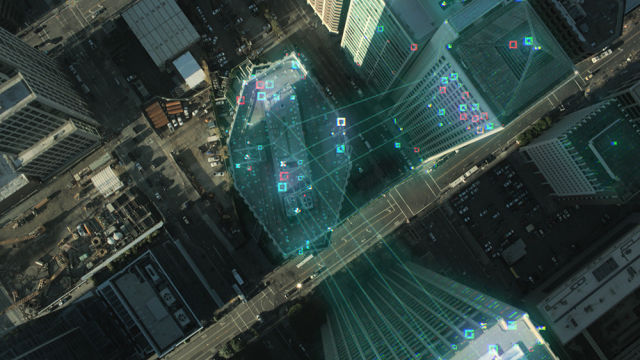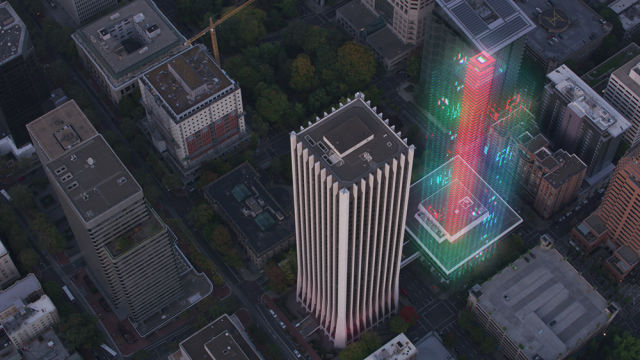Seeing double

Valeria Ferrando explains the difference between digital twins and BIM – and how twinning helps designers and operators understand their buildings better.
Broadly speaking, digital twins are not an altogether new concept. Research over the past few decades has been indicative of the possibilities that such technology might bring. However, it is only in more recent years, amidst a backdrop of growing digitisation and the advent of the Internet of Things (IoT), that the technology has begun to gain traction across many different industries. Certainly, it is one trend which is steadily gaining momentum within the construction sector, and looks set to transform the way we design, build and operate our buildings.
As with any emerging technology, it is inevitable that it will take time for the industry to fully get to grips with the Digital Twin concept. One common misconception is that a digital twin and a BIM model are the same thing. However, it is important to recognise a number of distinctions between the two.
So, let’s consider what constitutes a digital twin and, importantly, how this differs from a typical BIM model.
A Digital Twin is essentially a virtual replica of a physical component or entity and the dynamics of that component or entity. This live twin gathers data and uses physics based simulations to create a data rich living, breathing model that behaves in the same way as its real world counterpart. This means a digital twin can have many useful applications ranging from continuous monitoring, fault detection and maintenance planning, to the testing of new ideas and “what if” scenarios.
In the built environment, Digital Twins act as live digital models of physical buildings and can function as problem-solvers, providing decision support information needed to improve asset performance, influence future building design and reduce risk. They provide a one on one representation of a building in-use, replacing design assumptions with real data to result in a calibrated or operational model of the building which updates and responds in real-time.
How is this different from BIM?
BIM has been around for decades and architects, engineers, and construction companies have long used building information modelling software to help them design and construct buildings.
A BIM model is a detailed model that provides a central point of reference throughout the lifecycle of a project. It is an important data repository which enables the visualisation and management of building data and facilitates collaboration across the whole project team. Information is updated at key project stages, however the BIM model remains very much a static representation or “snapshot in time” of the building, which is based largely on design assumptions or construction documents. Current BIM models do not include the dynamics of a live digital twin.
While in the UK, Level 3 BIM will seek to extend BIM into the operation of assets over their lifetimes, in their current state, most BIM models focus only on a building’s design and construction and they are often not built to facilitate the ongoing operational management and optimisation of the building.
Although there are some similarities with a digital twin (a digital twin is also a model of the building with semantic information attached) there are key distinctions. The addition of real-time sensors and big data, combined with the power of physics based simulation (offered by programs such as our IES Virtual Environment) means that a digital twin has further reaching applications than a typical BIM model. A digital twin not only looks like the building, it behaves like the real building, responding to operational conditions and building occupancy to produce an invaluable operational asset. It is the addition of physics based simulation that makes this possible, as well as offering the ability to fill data gaps, make predictions on completely unforeseen scenarios and continuously optimise operational performance. In this sense, a digital twin is much more focused upon building performance than a typical BIM model.

What does the future hold for Digital Twins in the built environment?
As we look forward, the role of digital twins in the built environment will become even more valuable as further research and development is undertaken to evolve current Artificial Intelligence (AI) and Machine Learning (ML) techniques. While the technology is here now, we are only just beginning to scratch the surface in terms of creating value from built environment data using such techniques to sift through the mountains of available information to understand historic trends and inform the future. When you combine AI and ML techniques with the power of physics based simulation, real-time performance optimisation of built environment assets and the many other benefits that digital twins can offer become a reality. This will help our industry towards the goal of drastically reducing energy use and reaching the zero-carbon targets needed to address the climate emergency.
What’s more, the scope for digital twins goes beyond individual buildings. Where BIM typically focuses on a single building, a digital twin can encompass multiple interconnected buildings or communities to simulate how things will look and interact in a huge range of different scenarios. This means they can be used to perform much broader analysis and answer questions concerning community-wide solutions, such as: "What opportunity is there to use renewables?” and “What savings could be achieved through installation of a district heating system?”
This is something which is already happening and here at IES our own digital twin technology – the Intelligent Communities Lifecycle (ICL) – is making it possible to bridge the gap between the real world and simulation to enable the energy efficient design and continuous operational optimisation of not just single but entire groups of buildings. This combined with the ability to integrate analysis of not just the buildings themselves but also the energy networks connecting them, means that our digital twins can help facilitate the transition beyond BIM Level 2 to Level 3. The full digitisation of design, construction and operation will then see new and emerging technologies, the internet of things and advanced data analytics create further opportunities to support building design, delivery and ongoing operational optimisation at scale.
Conclusion
While our buildings have changed significantly over recent years, the way we design, handover and operate them unfortunately has not. The building industry needs to catch up with other industries in their use of digital technology and data and the digital twin will be a crucial tool in helping us get there.
As with any emerging technology, it will take time for the industry to fully understand and embrace the opportunities which digital twins can offer. Given that the technology is not mandated, it will be incumbent on individuals to recognise the added value a digital twin presents at all stages of the building lifecycle and pave the way for more widespread implementation. In an industry where all too often we see innovation held back by clients who are unaware or unwilling to pay for it, education will be required to demonstrate the social, environmental and economic benefits of digital twin technologies.
While BIM has, and continues to serve, a valuable purpose, the time has come to evolve these static models into digital twins and bring them to life. This will allow stakeholders across the built environment to better manage assets and services, track their real-time efficiency, maximise utilisation, minimise energy use and more. If this happens, then there is no doubt that the technology will revolutionise how we design, build and operate, not only at the individual building level, but across the entire built environment.
Valeria Ferrando is EU head of Research at IES.







